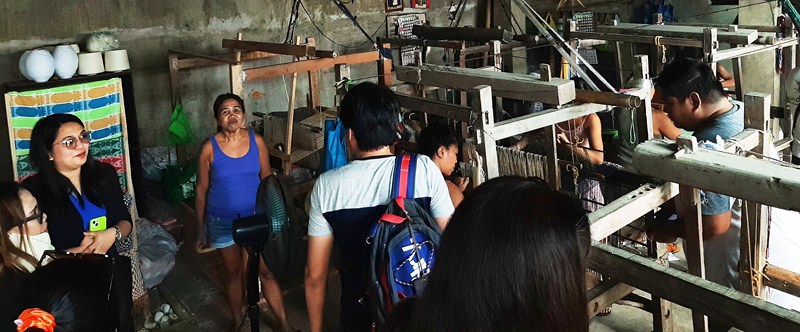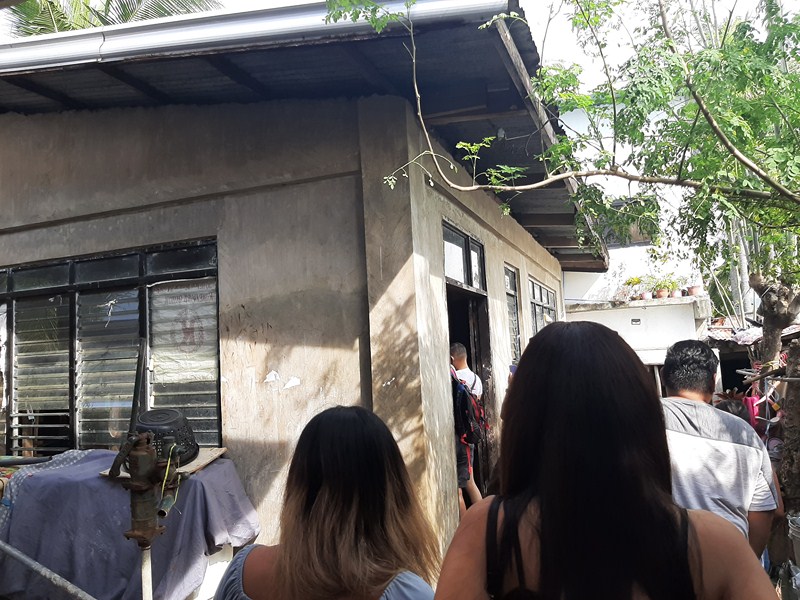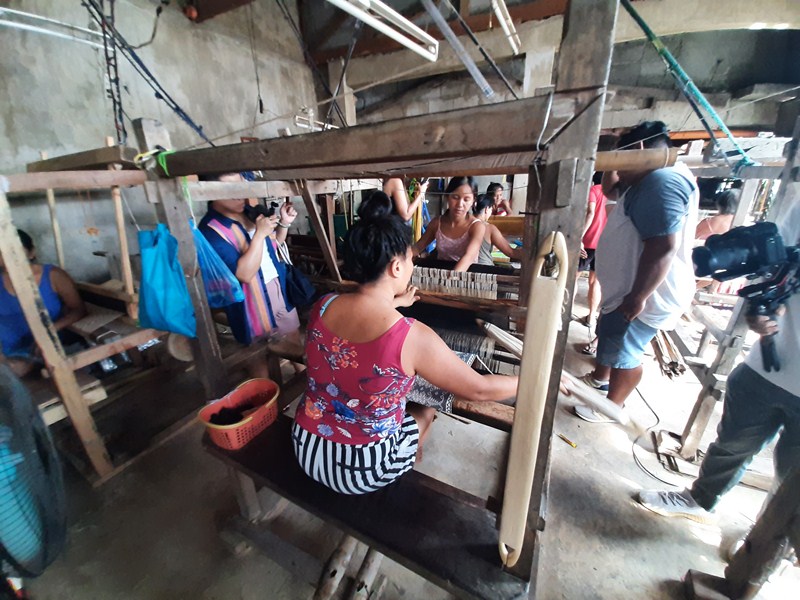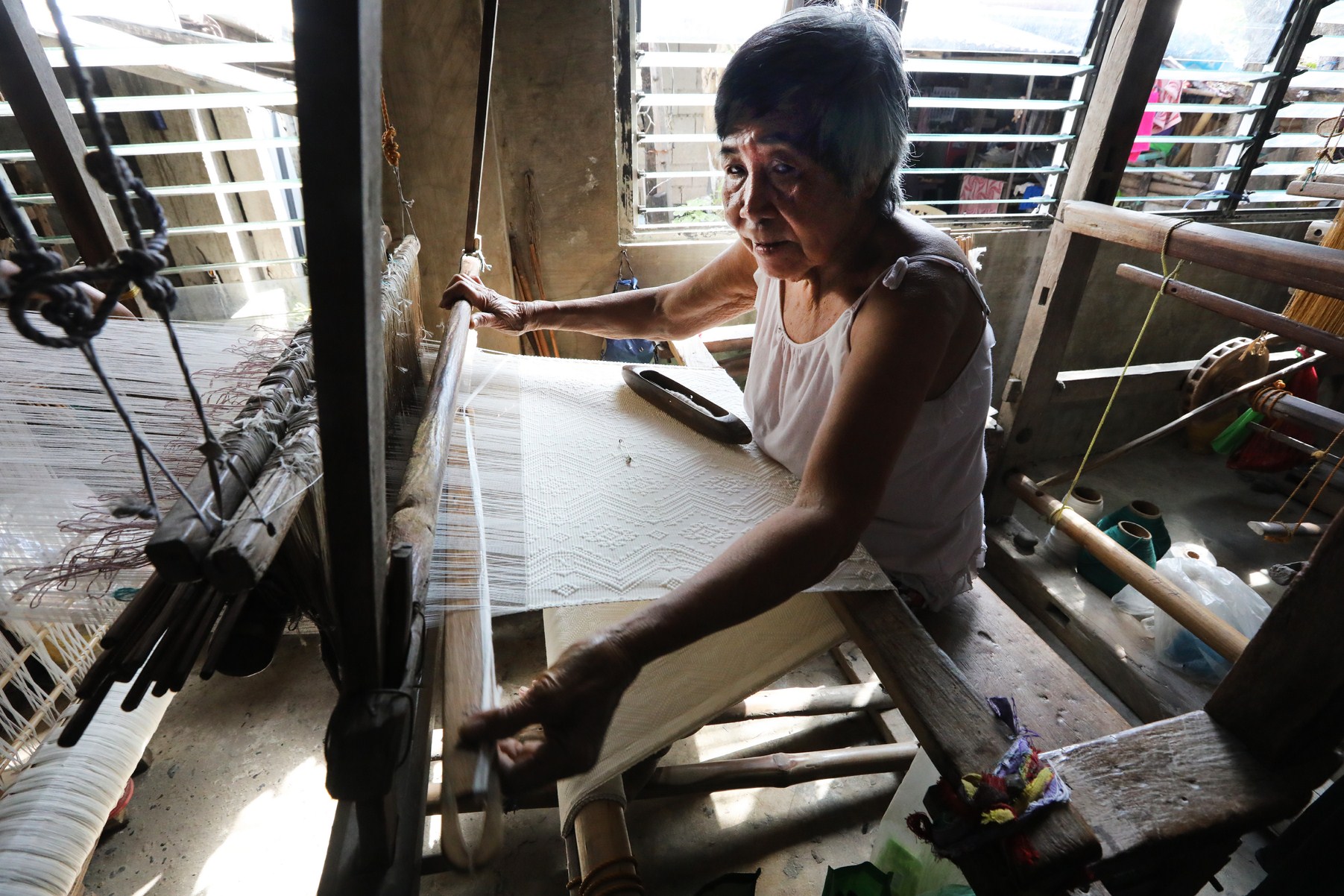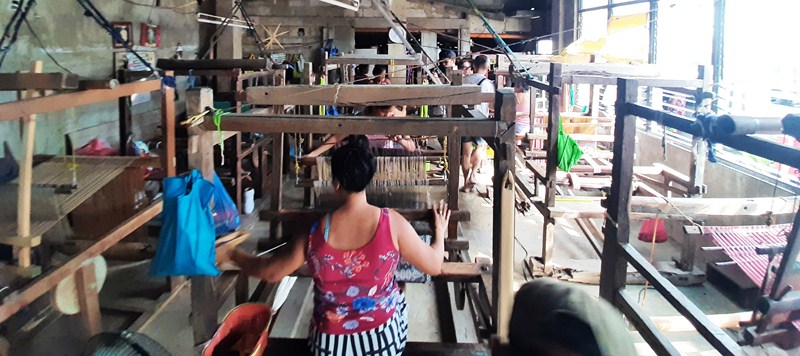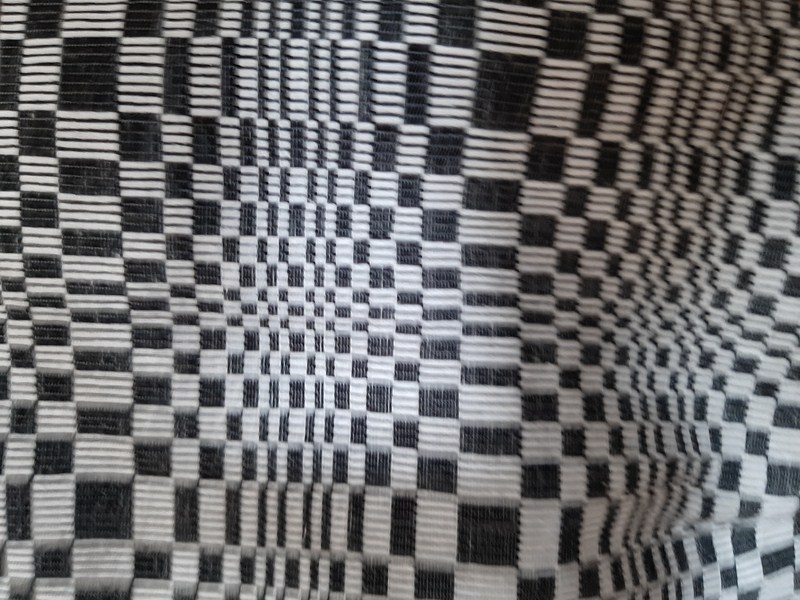Part of Santiago Cove Hotel and Restaurant-sponsored tour
Santiago Cove Hotel and Restaurant organizes educational tours for guests and one of their tours includes a visit to the nearby Corazon C. Agosto Ethnic Handloom Weaving which manufactures the strong and colorful inabel (sometimes referred to as abel iloko or simply abel) cloth, one of the many known textiles that come from the weavers of Santiago. The traditional woven product of the Ilocos region, abel weaving is one of the richest weaving practices in the Philippines.
Abel garments and textiles, characterized by their vivid colors, precisely woven geometric patterns, different variations and the accuracy of the grid designs (woven without any specialized equipment), are some of the most well known in the Philippines. We were welcomed by the 82 year old Ms. Corazon Campilla Agosto (fondly called Manang Cora or Coring) who heads the Sabangan Original Loom Weavers Association, an accredited non-government organization of the proud coastal community that continues to practice weaving traditions passed down from generations of Ilokano weavers.
All the weaving knowledge of Manang Cora dates back to 1941 when, as a little girl, she watched her mother and grandmother working the loom. She began weaving in 1961 (earning P5 per output at most). In 1975, she decided to independently pursue this business (selling her two pigs for money to use as capital), selling her woven blankets to traders in Vigan.
Struggling to make ends meet, she tried out working as a domestic helper in Manila for a year before eventually returning home to continue weaving. To keep the production going, she passed down her knowledge to her own daughter Logelin Quional along with the other female weavers she works with. Even her son-in-law as well as her grandchildren (Aliyah and Aldrix) knows how to weave.
In 1990, Sabangan’s weaving industry experienced an economic boost when former Philippine senator Anna Dominique “Nikki” Coseteng, who had a passion for local weaves, saw the works of Manang Cora and brought them to a wider market. Partnering with the Itneg/Tingguian, she and the Sabangan weavers continues to use their weaving motifs in her products today.
She describes her laborious and technical weaving practice (like many traditional Philippine weaving practices) as tawid-tawid (from the Filipino word tawid meaning “to cross”), showing us just how precise the hand of an inabel weaver is. The process begins with the stage called aggan-ay wherein her loom is readied by placing her warp threads vertically across the structure, allowing her to determine the colors and size of her final cloth.
The next stage, called agpulipol, is where the weaver rolls the thread up using a wooden spindle (called a pulipol) which readies the warp threads for weaving. During the design setting phase (agpili), the weaver inserts the horizontal weft threads into the base so she may start plotting the design. During agabel, the final weaving process, the weaver uses a boat-shaped sikwan (heddle bar) that moves back and forth across the cotton cloth, the swift hands rhythmically pulling the reed toward the beam that adds another row to the design which slowly comes to life.
On display are the expertly crafted final woven products of Mang Cora and the Sabangan weavers, a testament to their skill in mastering the tawid-tawid. Two of the inabel cloths feature the kusikus, a common pattern created by a weaving process known as binakol (also known as binakel or binakael, from the Ilocano word meaning “twill”) characterized by undulating square grids meant to mimic whirlpool patterns. Sailors use kusikus cloths as masts for their ships, believing the patterns would appease the gods of the sea and protect them from whirlpools.
Another inabel cloth featured the pinilian pattern, a brocade weave (often with different colors of threads) which usually has different motifs woven into its warp, from the tao-tao (human figures), to animals, to sinanbaggak (stars) and mata-mata (eye symbols).
Today, there is great appreciation, both locally and globally, for the inabel of Manang Cora and the weavers of the Sabangan Original Loom Weavers Association in Santiago and their weaves have become recognized for their beauty and skill..
Corazon C. Agosto Ethnic Handloom Weaving: Brgy. Sabangan, Santiago, Ilocos Sur.
Santiago Cove Hotel and Restaurant: Sabangan Beach, Brgy. Sabangan, Santiago 2707, Ilocos Sur. Mobile number: (0917) 115-4495 (Globe), (0917) 654-2078 (Globe), (0968) 851-5446 (Smart) and (0955) 773-9793 (Rodrigo’s). E-mail: hsantiagocovehotel@gmail.com.

